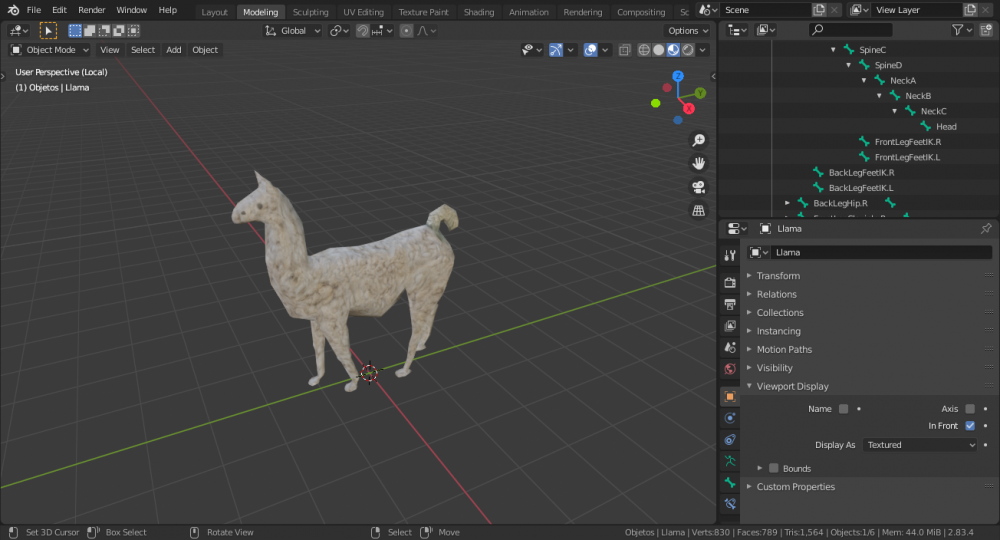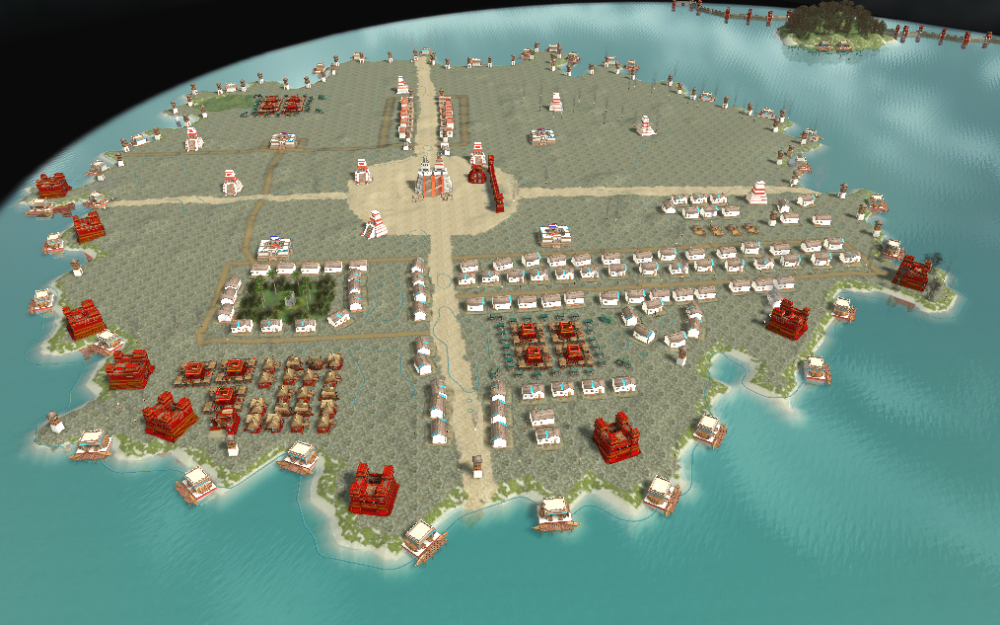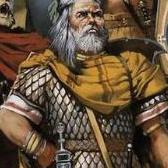Leaderboard
Popular Content
Showing content with the highest reputation on 2021-03-13 in all areas
-
I only recently started playing this game and am really loving the overall art design except for one. The fortress. I just don't understand why the artist/s have decided to make the strongest defense structure in the game to be so short. They are literally shorter than your walls. It makes no sense I don't have any complaints about the area the fortress covers or its hit points, garrison and any other features. But for city builders and defense-based players who like to build walled cities defended by towers and fortresses, the fortresses are just visually unappealing. I think fortresses need to be designed much taller to give them a formidable and imposing aesthetic. And definitely taller than the walls.4 points
-
Really what I call a constructive criticism, thank you. I'm already working on some patches: https://code.wildfiregames.com/D36774 points
-
Currently blacksmith technologies, the vast majority of time, are still only researched a while into Phase 3. They’re just too expensive for what they provide and without any bonuses for phasing up or specific unit upgrades, like in AoE2, phase 2 is generally just a step on the way to p3. Place the 4 buildings, maybe get eco upgrades and go up. Making blacksmith upgrades more accessible will help encourage aggression in phase 2. In addition, I believe there should be a 3rd level of upgrades for the blacksmith, especially if we stick with just 4 different upgrade types. Also, I like that upgrade costs for ranged and melee are differed by food, wood costs and I will stick to that. To keep it simpler I’ll also retain both armor upgrades having same total resource cost and both attack upgrades having same total resource cost. Attack Currently: 600F/W + 400M then 900F/W + 600M Attack Proposed: 150F/W then 200F/W + 100M then 400F/W + 250M Armor Currently: 400F/W + 400M then 600F/W + 600M Armor Proposed: 100F/W then 200F/W + 50M then 500F/W + 300M I think the last armor upgrade providing +2 armor instead of +1 would be good too (I based the cost on that being the case), as the armor upgrades scale worse and it would also help keep the kill times from becoming too low.3 points
-
Hello ! I have seen plenty of feedback and complain about A24. So I will share with you my personal feedback, I hope it will be constructive and maybe help some people to understand the new Alpha. Some point can be redundant with other feedbacks; I just want to be exhaustive (As much as I can), I don’t want to insist on any point. Civilizations strength and weakness : Athenians: A23 : Used to be a strong civilization due to Strong slingers, very good hero Iphicrates (+3 overall resistances) and black cloak for siege sniping and raiding. A24 : Seems a bit weaker due to weaker slingers, hero permanent death and no more black cloaks. Strength: Stronger building +10% metal gather rate per phase Iphicrates Slingers for low wood map Archer champions Weakness: All ranged infantry are based on minerals (stone/metal). Sword infantry trainable only in docks. -> Athenians weaker in A24 than in A23 (It’s OK, they were too strong) Britons : A23: Top 3 civilization, strong economic bonuses (population space on every building/building faster to build/rotary mill), decent hero, strong early slingers rushes. A24: Better balance, small economic bonus with building faster to build, Dog phase 1 strong for rushes (can easily deny all food income of your enemy), decent hero. Strength: Faster building Dogs Rushes (Good micro mandatory) Weakness: Weaker building Only rams as siege weapon -> Britons weaker in A24 than in A23 but still decent, harder to play, not a beginner civilization anymore. Carthaginians: A23 : Decent civilization, strong cavalry, very strong hero, variety of siege weapon make them adaptable to situations. A24 : Strong civilization, very strong hero, Strong archer, variety of siege weapon make them adaptable to situations. Very good team play: Hannibal Barca + international trade bonuses. Strength: Cheaper docks Strong hero International trade bonuses Massive Stone Walls (good option now due to floating stone) Apartment Weakness: Swordsman only as mercenaries -> Carthaginians stronger in A24 than in A23. Well balanced now. Gauls: A23: Top 3 civilizations, strong economic bonuses (population space on every building/building faster to build/rotary mill), strong heros and fanatic strong for raids. A24: Decent civilization, economic bonuses (building faster to build/extra food upgrade).Very strong power spike at phase 2 due to extra damage on sword cavalry en cheaper fanatic. New champions, Heroes easier to reach. (Cheaper stable and barracks.) Strength: Building faster to build Extra food upgrade phase 2, helps for the sword cavalry spam. Strong Heroes Strong melee cavalry (+15% damage) Strong team bonus Weakness: Only rams has siege weapon Weaker buildings -> Gauls weaker in A24 than in A23 but still decent. Harder to play, not a beginner civilization anymore. Iberians: A23: decent civilization mostly played for its team bonus, decent hero. Very defensive civilization. A24: decent civilization weaker team bonus, decent hero, Strong cavalry champions. Strength: Good hero Very strong champion cavalry (fire damage) Extra sword upgrade Revered Monument Massive towers Starting walls Very strong fire ship Weakness: No economic bonuses Only rams as siege weapon (Ok there is champion cavalry) No counter to melee cavalry phase 1 -> Iberians are stronger in A24 than in A23, They are more independent and don’t need to rely only on their allies. Kushites: A23: Worst civilization, even with decent heroes, economic bonuses (pyramids). Team bonus not useful due to weak elephants. Weak unique mercenaries, costly rank 3 healers. A24: Strong civilization, Decent heroes Economic bonuses (pyramid). Strong team bonus, Strong unique mercenaries, free rank 3 upgrade healer. Strong unique Axeman champions. Strength: Small Pyramid (+15% gather speed) Large Pyramid (+10% damge +1 resistance) Rank 3 healers Stronger rams Mercenaries maceman Champion Axeman Decent Heroes Archery tradition (+10 attack range for archers) Weakness: None -> Kushites are way stronger in A24 than in A23, many gameplay possibilities. Macedonians: A23: One of the worst civilizations no swords, no spears, useless heroes, no economic bonuses. A24: A bit better thanks to champion swordsman, New champion crossbowman (a bit weak can’t be spammed due to massive overkill) Strength: Phase 1 spear cavalry Variety of siege weapons Hellenistic Metropolis (Civic center +100% Health points) Stronger buildings Weakness: No economic bonuses No spear infantry (except champions) -> Macedonians Slightly stronger in A24 than in A23 but remain as a bad civilization Mauryas : A23 : Decent civilization (Very strong in nomad games), Heroes a bit weak, economic bonuses (Elephant worker), +10% population limit, only elephant as siege weapon (except expensive champions maceman and tricky rams) A24 : Very strong civilization, Heroes still weak, economic bonuses (Elephant worker), +10% population limit, Strong unique champion maceman, Strong Archer chapions, Strong elephant archer, Indian siege elephant, access to rams.(cheaper barracks/stable) Strength: Elephant Workers +10% population limit Elephant faster to recruit Indian Siege Elephant Extra Sword upgrade Archery tradition Unique Champion Maceman Strong archer champions (poison damage) Strong archer elephants Cheap Walls Weakness: None -> Mauryas are stronger in A24 than in A23 Persians: A23: Good civilization, slow start and very strong late game. Extra population limit, over powered cavalry, no economic bonuses, Average heroes, strong rams. Apadana (resources trickle) A24: Strong civilization, balanced cavalry, extra population limit, double conscription, strong rams, Indian elephants. Apadana (resources trickle), average hero, huge trading bonus. Strength: +10% population limit Archery Tradition Double conscription Indian Elephants Strong Rams Apadana (Resources trickle 1food + 1wood +0.75stone +0.75metal/seconds) +25% trade gain Weakness: No early economic bonus -> Persians have a stronger start and weaker late game in A24 than in A23. Civilization way better balanced than in A23. Ptolemies: A23: Top 3 civilization, economic bonus (free buildings), good team bonus, Strong heroes, strong army compositions, large variety of siege weapons. Very strong navy: Lighthouse, Juggernaut. Camel Archer Phase 1. A24: Very strong civilization, economic bonus (cheaper buildings), good team bonus Strong Heroes, strong army compositions, large variety of siege weapons. Camel Archer Phase 1. Standard navy. Strength: Cheaper buildings (-40% cost for house, corral, storehouse and farmstead) Strong heroes (and in Civic Center) Variety of siege weapons Stronger Bolt Shooter (faster less overkill) Library Hellenistic Metropolis Military Colony Camel archer at phase 1. Weakness: Swordsman only as mercenaries All ranged infantry are based on minerals (stone/metal). Spear unit only as mercenaries -> Ptolemies are slightly weaker in A24 than in A23. A bit better balanced but still very strong. Romans: A23: Strong civilization, good heroes, good team bonus, strong siege, very strong military camps, spear cavalry phase 1. No palisade and no economic bonuses. A24: Decent civilization, good heroes, good team bonus, strong siege, weaker military camps, spear cavalry phase 1. Now they have palisade Phase 1. No economic bonuses. Strength: Castra (Army camp) Strong heroes Strong siege Good team bonus Spear cavalry phase 1 Weakness: No economic bonus -> Romans are weaker in A24 than in A23. (It would have been great to have other kind of unit in castra than only melee) Seleucids: A23: Decent civilization, medium heroes, variety of siege units, good army compositions. No economic bonuses. A24: Decent civilization, medium heroes, variety of siege units, good army compositions. No economic bonuses.(no change overall) Strength: Free champion infantry upgrade Military Colony Hellenistic Metropolis Variety of siege units Good army compositions Weakness: No economic bonus -> Seleucids remain a decent civilization in A24. Better balance overall now. Spartans: A23: Good civilization, good heroes, strong women, skiritai and black cloaks phase 2 (huge power spike phase 2),the Agoge (+25% health to spear units). No economic bonus and population limit penalty (-10%) A24: Medium civilization, good heroes, strong women, no more population limit penalty. No more black cloaks and skiritai 25% more expensive. No economic bonus. Strength: Good Heroes Strong women (stronger than javelineer with loom) Stronger buildings Weakness: No economic bonus Only rams has siege weapon -> Spartans weaker in A24 than in A23. The change on the skiritai is a bit too much in my opinion. Overall balance: Lack of Metal: The current overall metal cost is fine for 1v1 when you have access to several metal mine. Contrariwise for team games 90% of the time you only have access to your starting mine (so 5000 metal). Economic upgrades: 1600 Metal Wood = 600 Metal Food = 600 Metal Stone ~ 200 Metal (1 or 2 upgrade, more is useless cause not enough mines) Metal ~ 200 Metal (1 or 2 upgrade, more is useless cause not enough mines) Forge upgrades : 4000 Metal Melee = 1000 Metal Range = 1000 Metal Hack = 1000 Metal Pierce = 1000 Metal Other upgrades : 5350 Metal Cartography = 100 Metal Cavalry = 350 Metal Will to fight = 1500 Metal Towers = 1000 Metal Siege = 1100 Metal Temple = 750(+600)Metal Trade = 550 Metal Buildings: 700 Metal Civic Center / Military Colony = 500 / 200 Metal Hero Building = 200 Metal Units: Hero = 400/350/300/200/150 Metal Champions = 100/80 Metal Mercenaries = 60/80 Metal Siege = 150/180/250/220 Metal Trader = 80 Metal -> Just for economic and basic forge upgrade you don’t have enough metal on your starting mines. New forge upgrades: They are way better than it used to be. Having same upgrade for infantry and cavalry allow a faster adaptation to your opponent composition. For example, your enemy is going full archer then just go melee cavalry to clean is army. A bit too expensive. Due to the lack of metal. Mercenaries: Very expensive due to the lack of metal. (only 80 resources but all resources don’t have the same cost) Similar strength as standard units but doesn’t gather resources. Costly Rank 2 upgrade. (they should be rank 2 by default and upgrade for rank 3) Faster to train -> Expensive unit for panic situations. Never used technologies and building: Theatron: currently way too expensive a barrack on the border is the same and at least it produces units. Outpost: useless in A24 Naval Shipyard: Units repairing ships are better and less expensive. Edict Pillar of Ashoka: hard to reach, expensive, not very useful because buildable only on own territory. Monumental Architecture: too expensive for a bonus/penalty upgrade. Persian Architecture: way better than Monumental Architecture but still an bonus/penalty upgrade. Spying technologies: 500 food + 500 metal + 600 metal is way too much expensive. A standard cavalry do better it cost only 150 resources and it can fight. Ranged Infantry Balance: Without any micro archers are stronger than javelineers and slingers Bigger range makes units easier to micro Weaker units (less Health Points) makes ranged unit even stronger. -> Archer units are too strong. Maybe give back the A23 statistics to the slingers and give 2 or 3 standard pierce resistance to the javelineers making them stronger against ranged units and still weak against melee.(like this all 3 ranged infantry are unique) Catapults: Catapult are way weaker than they used to be in A23, they are useless against units (which is great) they are easily destroyed by archers, they deal very few damage. However they are a bit too expensive : they are more expensive than rams and elephants. I suggest to reduce their resources price and also the population cost, 3 is too much currently 2 might be better. “Turtling”: The consequence of many change made turtling (staying on your base waiting your opponent to suicide on your defence) too strong. Building are way more deadlier than they used to be. Demography: Hard to keep a high population: Units have less Health points. (impact the overall balance) Units are longer to train. -> HP bonus per phase was nice. Miscellaneous: Slingers now use their ranged weapon to attack wolves! Ambriorix now is worth it ! No more penalty it’s great ! Hero permanent death, it will be fixed on A25 apparently. (Am I right?) Units turning : It avoid dancing abuse, which is good, but maybe the better ranged accuracy was enough. Slow down the game. Retreat is now similar to suicide. Trading ships : They are clumsy, they can’t be spamed. The trader garrison bonus is not enough. A trader + a merchantman should carry the same amout of resources between two docks as a merchantman with a trader garrisoned. Wonders: Doing the population limit bonus as a percentage is really great. Celtic population bonus in every building was too strong but it was a great to have. Instead of removing it completely reducing it would have been nice. Bugs : DDOS: Finishing a game is really rare. (balance issue is nothing compared to this) Lags: currently the game lags way too much making it not very enjoyable to play. (I wonder if a smart person can make a “cubic” mod to replace all 3D design/texture/animation by cubic shaped volumes without animation with mono coloured texture. To reduce lags) Graphical issues example: destroying animation of mauryan barracks is broken, half of the walls disappear. Pathfinding issues : Units are clumsy Units disobey Units have their own will Units auto focus : Units are automatically focusing palisade, field and walls. This is game breaker your entire army can be killed because they hate fields. Example : Units don’t protect siege units when opponent ungarrison building because they are attacking field or palisade or walls. Also for ship, a shore fight between 2 ships, can be unbalanced by the presence of palisade on the shore. -> Unit should attack (capture aswell) buildings only if they are tasked to. Philip V doesn’t have full description on the learn to play panel. Rank 2 units in castra are not specified in the description. Rank 3 Healer in PR’IMN are not specified in the description. Wrong hero description for Caratacos in French. Personal feeling about the future: I have seen some proposition on the forum about gameplay “innovation” and I feel like it tend to copy similar RTS games such as Age of Empire 2. For exemple the food decay, the scout phase 1, cavalry not able to hunt anymore, stable, siege workshop... I am a bit sad about that, this game is wonderful and unique. It can be improved with real gameplay innovation such as regenerative fishes, trees and berries. There is no need to copy other archaic games. In the other hand lately Age of Empire tend to do the same and copy 0AD innovations: Soldier able to build Dock used as resources deposit Units can be garrisoned in houses -> I hope it is just a feeling. To conclude, in my opinion it is great that many issues has been discovered on this Alpha, it can’t be perfect the 1st time but it can always be improved. It is mostly the negative part pointed out but the work done is really great! Overall it is nice to play on this Alpha! Thank you everyone who contributed to this project! Post Scriptum : I have seen lots of complain about this Alpha but note that everybody has access to the next Alpha on SVN, you can test it and give your feedback before its release.3 points
-
I was wondering if it could be nice to have something like an "ambush site". The idea is to have a building serving only to hide units from the enemy in a specific spot. The ambush site could be used to ambush faster units, valuable units or units with better range. It would be an alternative way to defend against camels or spear cavalry rushes for example. It would provide you with some vision when soldiers are inside. Even after being spotted, the ambush site could provide some passive defense since the enemy would not know whether some units are inside and getting close would be therefore risky in any case. In latter game, it might be used to ambush valuable units such as sieges. You might also use it to hide some skirmishers from the enemy chasing them. I have in mind something like a small building which looks like a bunch of trees (don't know if that's feasible). It should be cheap, fast to build, could be built on any territory. For the ambush to make sense, the building should not be visible on the minimap. It should be small enough such that the enemy don't spot it by moving the cursor around too easily( maybe the size of an iberian house). I think however that it should look like a bunch of trees to allow to formulate guesses about potential ambushes and catch the idea that units are "hidding behind trees" (if you spot a bunch of trees next to your additional berries, you should be worried or if you see some soldiers disappear somewhere, you could guess they hide in those trees). The building should be available in P1 and easy to destroy too after you spot it. I remember a post mentioning that guerilla technics were specific to Britons, I think it could be a fun addition to that civilization (especially if dogs could be hidden there since they have no economic utility). Would something like this be feasible? Does that sounds nice? Thanks for your feedback!2 points
-
Hey everyone, I am writing this post to let you know I will become mostly unavailable in the coming weeks. As some of you know, I pushed my limits a lot farther than I ever did for this release, and this combined with some of the threads here + AFK life has had a big impact on me. Probably because I always want to see and take the best out of people. Anyway, to be able to give my best again, I need some rest. And unfortunately, it seems that requires a complete break, else I get dragged in too many things at once, and will never stop until I break again. We have art assets to improve, maps to ditch and make beautiful again, and maybe even a new civ to add. Social Media might be a bit silent too for a while. If you see people having issues, don't hesitate to help / direct them to the forums. "All we have to do is decide what to do with the time that is given to us." I count on everyone of you to help make A25 a success and to be nice when I'm gone, and I hope to see you all soon. See you soon everyone, PS: If you really need to reach me you can send me an e-mail.2 points
-
Hello all, the last few days i've bricked und built thousands of bricks and pieces ... the reason was: i've found in the www this amazing 3D Temple from Alan Canepa and i decided, this would be my medieval wonder. Even though this is a model with "Extended Commercial License" i would not use this but rebuild it by myself. If you compare the models, yes, my model is absolute not so fine as the original, but i'm happy with this. All pieces are made by myself except the statue's: they are also under CC0 License and are created by Daniel74 The next step is to build a lowpoly model from this, because the Blend-file is absolute too big ... - it would never find the way to 0ad als DAE ... So, here are some pic's: First the Original: and here the my try:2 points
-
Here's an alternate set of costs for discussion sake: Infantry Hoplite 60 food 50 wood Infantry Pikeman 60 food 50 wood Infantry Spear 60 food 40 wood Cavalry Spear 100 food 40 wood Infantry Sword 70 food 30 metal Cavalry Sword 110 food 30 metal Infantry Javelin & Archer 40 Food 60 Wood Cavalry Javelin & Archer 80 food 60 Wood Infantry Slinger 40 food 20 stone (weak slingers) or metal (strong slingers; Balearic, Rhodian)2 points
-
2 points
-
If you don't mind, in Delenda Est I will go with my original idea for the heroes and make the "Battle Priest" a hero and the "Jaguar King" a hero, just so they can have a choice just like the other civs have a choice. If I do this, do you have any suggestions for the auras? Each hero in Delenda Est has these attributes: Primary Aura (ranged, 20-50 meters) or Bonus The bigger the range, the lower the effect; the shorter the range, the greater the effect "Bonus" could be like Agis, where he has 3x more health than other heroes, or be like Leonidas who has greater attack than other heroes, or Iphicrates who is much faster than other heroes, etc. Secondary Aura (global) or Bonus "Global" means it covers the whole map for as long as the hero is alive. Global auras tend to be weaker in effect because they cover more units/structures. Special Technology Unlocked in Town or City phase. Mount or other personal Upgrade in City Phase. Most heroes can upgrade to a war horse (all of the Roman heroes) or chariot (Cambyses and Xerxes). Leonidas upgrades to a frenzy mode. Socrates upgrades to campaign armor. Since Zapotecs don't have horses, they can maybe upgrade in some other way as Leonidas and Socrates do.2 points
-
Omg yes - this would be phenomenal, and also would differentiate Carthage from Kushite mercenary camps even more And then those buildings could really be embassies as opposed to mercenary camps - to explain as the situation was in a23, and is in a24 there is only difference in semantics of the name - this would give the whole new meaning to the concept of "embassy" in Carthaginian civilisation, and the limit would not affect it because barracks are unlimited anyway I think this would be the best solution to this problem - Carthaginian barracks cost 200 wood and 100 stone witch is too expensive for only archer and spearman, but it would in this case make the cost of the structure more reasonable I think it is not fair to have a building that lets you train only 2 basic units and no champs to cost the same as for example Kushite barracks that give an option for sword/spear/pike/archer/archer champions or better yet - Macedonian or Ptolemie which also lets players train mercenaries that also costs the same price - if this on the video is implemented everything would make more sense in regards to the price of buildings2 points
-
Oh sorry! It was in 2014, the decision was made to remove hard counters (like the rps designed in the early years) and replace them with stats (speed, accuracy, range...) and gameplay features (flanking, ...).2 points
-
In fact my original idea was that only Gauls could have access to the forge in the village phase (I did it in my patch), I think it would be a great differentiation, with a historic backing to be a good rush civilization2 points
-
2 points
-
Just as there is unlocking technologies, there could be unlocking structures. One use of those structures would just be to unlock the corresponding units, not to actually produce them (barrack is for that).2 points
-
Indeed, they could be a little bit more impressive.2 points
-
2 points
-
Actually the Athenians need an entirely new wonder (the Parthenon). The actor they're using right now is the temple of Zeus at Olympia. Something for a future task.2 points
-
That was posted many times. Those things were around 2014. At the time there was a design group, then one person in charge of the gameplay. That was the beginning of the lobby too. A time of changes: https://trac.wildfiregames.com/changeset/15644 https://trac.wildfiregames.com/changeset/15655 https://trac.wildfiregames.com/changeset/15713 Decision of moving to hard counters to gameplay features: But then, there was an appraisal of those changes:2 points
-
Please consider taking into account the @Obskiuras concept designs, they look really good.2 points
-
@wowgetoffyourcellphone Is there already a texture set for the suedi civ, or does it need to be done ?2 points
-
0 A.D.: A Sandbox for Exploring Game Balance at the AI and Gaming Research Summit (23/Feb/21) Relevant 0 A.D. part: 1:00:40 Speaker: Brian Broll (Homepage & wiki/GettingStartedReinforcementLearning article and Youtube account)2 points
-
Know how there is a "max gatherers" stat? There can be a "max attackers" component. For structures we can make it rather large, like 80 for a large structure. But for units we can reduce it considerably. We can base it largely on footprint size. So, melee attackers attacking a target won't mill around and run around trying to get to the target if too many are tasked to the target, they will find a new target instead. And then also, archers will seek a different target if too many are already targeted. We could even go a little more granular with it and divide it up between melee and ranged max attackers.2 points
-
Back from my hiatus. I will keep coming back to this post to add more info, or maybe add more words later. I will also add the comments from the post where this list was before (here). I will be using Matasović (2009), Etymological Dictionary of Proto-Celtic, and to a lesser extent, Xavier Delamarre (2003), Dictionnaire de la langue gauloise: Une approche linguistique du vieux-celtique continental, Dottin (1920), La langue gauloise: grammaire, textes et glossaire, as well as the documents for Gallo-Brittonic by Deiniol Jones, the old University of Wales Celtic Lexicon documents, and a bit of Wiktionary and other sources if needed. Deinol Jones follows Gallo-Brittonic, rather than P/Q- or Insular/Continental Celtic division, which is useful since both factions would belong to the same overall dialect continuum, meaning the same names could be plausibly used for either, unless we want very specific regionalism. Spelling can be altered at will (c=k, i=y=i, u=w=u, v=w, no long vowels, etc.). House Current: Tegia Suggestion: : Tegos [pl. Tegesā] /ˈte.gos/ - house : Butā [pl. Butās] /ʽbu.taː/ - dwelling/hut : Wastu(s) [pl. Wastow(ā/es)] /ʽwas.tu(s)/ - dwelling : or maybe Tigos [pl. Tigesā] /ˈti.gos/ Could use both, Tegos for Gauls, Tigos for Britons. Justification: Matasović, Delamarre, and the UoWales lexicon give the PCelt. (Proto-Celtic) word *tegos- (house) with -s stem, so nom.sg. *tegos, and would give either GallBrit. (Gallo-Brittonic) *tegos- or *tigos-, with e>i, (see OW (Old Welsh) tig, making GallBritt. g>∅, difficult to justify, especially as Delamarre mentions it is only late Gaulish (p. 97)), though with the attested Lat. (Latin) attegia-hut in Juvenal, from where the previously suggested tegia comes from, the e>i might be overzealous. The Jones lexicon gives tegos as well. Matasović gives *ad-teg-yā as derivation, which would ultimately come from the same *tegos-. Matasović is unsure about *tīg-s, so perhaps Tegos is the better choice, or we use the two different ablauts for the two different factions. However, Delamarre shows possible attestations with *tigos-, such as Tigorix and Tiotiginus (thanks to @Genava55 for the suggestion). Another option is Butā (dwelling, hut), present in Matasović and Delamarre (as PCelt. and Gaul. *butā), but not Dottin. One final option is using Matasović's PCelt. *wastu- (dwelling), though it is not present in Delemarre or Dottin. Matasović suggests MW gwas (dwelling) as a descendant, with cognates in Skt. (Sanskrit) vā́stu- (site of a house) and Gr. (Greek) (w)ásty (town). Assuming fem. from the MW, though the Skt. and Gr. (and also the PIE) are neut., so it could be either fem. Wastus (pl. Wastowes), or neut. Wastu (pl. Wastowā). Perhaps the neut. is more likely. Comments: @Genava55 is happy with Tegos, and helped with suggestions. Corral Current: Cagion Suggestion: unchanged (Cagio(n/s) [pl. Cagi(ā/oi)] /ˈka.gjo(n/s)/ - pen or enclosure) : or maybe Crāwos [pl. Crāwoi] /ˈkraː.wos/ - stable or enclosure : or maybe Cagro(n/s) [pl. Cagr(ā/oi)] /ˈka.gro(n/s)/ - enclosure or fort Justification: Matasović gives PCelt. *kagyo- (pen, enclosure), which would give GallBritt. *cagio-, or *caio-. Delamarre gives *cagio- for Brittonic and Goedelic. Attested as caio (wine cellar, quay) as well for Gaulish, from the Vienna/Endlicher's Glossary. The UoW lexicon gives nom.sg. cagion (field, pen, fence) as a neut., but unsure why, as all the derived terms even in OBret. (Old Breton) are masculine. Everything from OBret. to MoBret. (Modern Breton) already drops the g as well (but this process is, again, sourced from Wikipedia only). However, from Matasović, the word is attested as cagiíon (either neut.nom.sg. or masc.acc.sg.) in Gaul. (Gaulish), with no g dropping. Another alternative in Matasović is PCelt. *krāfo- (stable, enclosure), thus GallBritt. *crāwo- (Jones lexicon crāwos, masc.), and with OIr. (Old Irish) already as masculine, I assume nom.sg.masc. crāwos. However, Delamarre does not give this root, and Dottin gives Gaul. craff 'farm' as part of *crappao-. Another possibility, using Matasović *kagro- ('enclosure', 'fort'), though this is only found there and in the UoW, which gives the gender as neut.; though, again, I am not sure why, as it could be both. The meaning of 'fort' might present some need for reconsideration, but the possibility is still there. Comments: I prefer Cagio(n/s). Not sure about the rest. Farm Current: Olca Suggestion: unchanged (Olcā [pl. Olcās] /ˈol.kaː/) Justification: Matasović gives PCelt *folkā- (arable land), found also on the UoWales docs, which gives GallBritt. *olcā- (nom.sg. olcā, as in the Jones lexicon), with initial f/φ dropping. Attested in Gregory of Tours as Latin olca, confirmed by Dottin and Delamarre, Matasović suggesting from Gaul. *olca. Comments: None. Civic Centre Current: Lissos (Gauls), Tigernotreba (Britons) Suggestion: : Wentācridion [pl. Wentācridiā] /ʽwen.taː.kri.djon/ - town's heart : or Towtācridion [pl. Towtācridiā] /ʽtow.taː.kri.djon/ - tribe's heart : or with -sedlo(s/n)/-sedl(os/ā) instead of -cridios (Wentāsedlo(s/n) /ʽwen.taː.sed.lo(s/n)/, Towtāsedlo(s/n) /ʽtow.taː.sed.lo(s/n)/) - seat instead of heart : or Cori(o)- instead of Wentā (Cori(o)cridion /ʽko.r(i/jo).kri.djon/, or Cori(o)sedlo(s/n) /ʽko.r(i/jo).sed.lo(s/n)/) - troop/tribe instead of town Later Gaul. has neut.nom.pl. -ī instead of ā, affecting the plural of e.g. Wentācridion (Wentācridī), Many more options available, since it's a made-up compound. For Britons specifically: : Tigern(i/o)sedlo(s/n) [pl. Tigern(i/o)sedl(oi/ā)] /ʽti.ger.n(i/o).sed.lo(s/n)/ - the lord's/master's seat : or Rīgosedlo(s/n) [pl. Rīgosedl(oi/ā)] /ʽriː.go.sed.lon/ - the king's seat : or Tigern(i/o)tegos /ʽti.ger.n(i/o).te.gos/ - the lord's/master's house : or Rīgotegos /ʽriː.go.te.gos/ - the king's house Maybe also Butā and Wastu(s) instead of Tegos. Tegos>Tigos also possible. Wentā may be particular to Brittonic too, so perhaps those only apply here. We could also use two words in genitive apposition instead (Cridion Wentās, Sedlo(s/n) Towtās, Cridion Corī etc.). Justification: Delamarre gives *lissos (court, palace), with OIr. les (yard), MIr. (Modern Irish) and MSG (Modern Scottish Gaelic) lios, MW llys, MoCor. (Modern Cornish) lys, and MoBret. lez. Modern meanings in Goidelic languages are invariably 'court(-yard)', rather than 'palace', and the possible Greek cognate given by Delamarre means 'flat' or 'broad' (πλατύς), though it seems Brittonic languages do invariably keep the idea of 'court' (e.g. of law; thanks to @Genava55 for pointing this out). I am still suspicious of the PCelt. lemma, since the change from i>e does not seem plausible from my admittedly limited knowledge of Celtic, and instead *lesso- seems more plausible, with PCelt. less- > llys- in MW, and then the rest maintaning the original e, but I could be wrong. The lemma is only attested in Delamarre and Dottin. I like Tīgernotreba, but since not all Gauls had a singular ruler, and both Matasović and Dottin give *treba- as 'settlement' or a variant thereof (though UoWales gives 'home', and Jones gives both settlement and home), I propose a different compound, either 'heart of the town' or 'heart of the people/tribe', or with 'seat' instead of 'heart'. This is very speculative, many alternatives could be thought up, involving all these words or many more. I will justify Wentācridion primarily. Tīgerno- (lord/master), however could still be interesting for the Brittonic tribes. Matasović gives PCelt. *kridyo- (heart), *wentā- (place, town), and *towtā- (people, tribe), as well as *sedlo- (seat). Dottin only confirms *sedlo- and *towtā-, with Delamarre and the UoWales confirming those. Delamarre also confirms *kridyo-, but not directly *wentā-, which is common in Brittonic placenames. UoW confirms *wentā-, but also adds a meaning of 'marketplace', not shared with anyone else, though Delamarre suggests *wenet- to mean 'merchants' or 'allies' (pl??). This gives GallBritt. *cridio-, *towtā-, *wentā-, and either *sedlo- or *sidlo-, though for *sedlo-, caneco-sedlon is attested in Gaul., meaning likely no e>i and implies a neuter noun, though Delamarre also suggests that the attestation is an sg.acc. of *sedlos, so not all that clear! Jones gives cridyon (centre!!?), toutā (tribe), wentā (place, marketplace), and sedlo(n/s) (seat), all nom.sg. Possession is done as apposition in modern Celtic languages, and it seems also in GallBritt.; i.e. son [nom.] (of) John's [gen.], but in this case, I suggest we instead look for compound words, which appear to be usually done instead by merging the two stems as sg.gen+sg.nom, losing the final coda for all but the last word. For 'heart of the town', this would give Wentācridion, from nom.sg. cridion (assuming the OIr. and PIE (Proto-Indo-European) neuter is correct) and gen.sg. wentās. Similar pattern for 'heart of the people', as Towtācridion. Using 'seat' instead of 'heart' would be simply replacing cridion with sedlo(s/n), so Wentāsedlo(s/n). Since Matasović gives PCelt. *koryo- for both troop and tribe (though Delamarre, Dottin, Jones, and UoWales give only 'army'), giving GallBritt. *corio-, which you could argue for using it in place of *wentā-, with corio(s/n) (or pl. cori(oi/a)), another unknown gender word. MW uses canolfan for 'civic centre', canol-centre and man-place; centre-place, whilst Breton and Cornish have kres and krez ('centre'), which Matasović and Delamarre (and presumably also Jones) suggest comes from *kridyo-. All sources attest *tīgerno-, suggesting lord, or master. This would be applicable only to the Britons, since Gauls were not exclusively monarchic. Assumed N.masc. from more modern words. Unsure whether to use Tigerni- as the coda-less sg.masc.gen. o-stem, or Tigerno-, as the nicer looking (but possibly incorrect) prefix. Same case for Cori-/Corio-. Matasović gives *rīg- as the root of the very famous -rix ('king', e.g. Vercingetorix). Velar stem nom.sg. rīgs>rīx. Dottin does not give a root. Delamarre does not give a very clear one, but suggests PIE *rēĝs-, but compounds starting with (presumably gen.sg.) Rigo- are attested, so it seems like a velar stem, rather than an s-stem. The UoWales documents agree with Matasović. Comments: @Genava55 thankfully provided info for *lissos. No preference given from myself. @Genava55 liked the previous version of Towtācridion, not sure if he will like the updated one. Barracks Current: Coriosedlon (Gauls), Coriosessa (Britons) Suggestion: : Corio(n)tegos [pl. Corio(n)tegasā] /ʽko.r(i/jo).te.gos/ -troop('s/s')-house : or unchanged (Corio(n)sedlo(s/n) [pl. Corio(n)sedl(oi/a)] /ʽko.r(i/jo).sed.lo(s/n)/ - troop('s/s')-seat) : or with Cingeto(s/n)- instead of Corio- (Cingeto(s/n)tegos /ʽkɪn.ge.to(s/n).te.gos/, Cingeto(s/n)sedlo(s/n) /ʽkɪn.ge.to(s/n).sed.lo(s/n)/) - warrior(s)'s instead of troop : or with Slowg(i/on)- instead of Corio- (Slowg(i/on)tegos /ʽslow.g(i/on).te.gos/, Slowg(i/on)sedlo(s/n) /ʽslow.g(i/on).sed.lo(s/n)/) - troop(s)/arm(y/ies') instead of troops : or with with Budīnā(s/non)- isntead of Corio- (Budīnā(s/non)tegos /ʽbu.diː.naː(s/.non).te.gos/, Budīnā(s/non)sedlo(s/n) /ʽbu.diː.naː(s/.non).sed.lo(s/n)/) - troop(s)/host(s) instead of troops' We could also use Butā or Wastu(s) instead of Tegos (troops'-hut or troops'-dwelling). We could also use two words in genitive apposition instead (Tegos Corion, Sedlo(s/n) Cingeton, Tegos Budinās, etc.). We could also maybe use a compound in nominative (troop-house instead of troops'-house or house of troops; e.g. Coriotegos or Cingetobutā). Justification: Again, many different compunds imaginable, none secure. I like Coriosedlon, though I'm not sure the way barracks exist in the game is that exact to a praesidium, or 'seat of the warriors'. I propose instead 'warrior-house' or ' warriors' house', so Coriotegos from GallBritt. *tegos- and *corio- (see above), with nom.sg. tegos, and either gen.sg. Cori(o)- or gen.pl. Corio-. Same issue as Tigerno- above, where the sg.gen. is Cori, but keeping the o looks nicer, and is closer to the stem. This applies also to Cingeto- and Slowgo-. And instead of Tegos (house), we could use Butā (hut/dwelling) as well. Matasović gives *kenget- for 'warrior', Dottin gives cinget- (I guess not a root, but a prefix?), whilst Delamarre gives *cingets, and the UoWales docs are unsure about *kenget-. Declension is not very important, since we have Ver-cingeto-rix, though the gen.pl of an s-stem is -eson, so cingeson, not cingeton (for a dental stem), the latter of which might be more plausible? All sources attest *slowgo- or some variation in spelling, meaning 'army' or 'troop', giving either gen.sg slowgi (for army), or gen.pl slowgon (for troops). All sources besides Dottin give *budīnā- for 'troop' or 'host', though Delamarre suggests it could have originally meant 'border-guard-force', and UoWales is unsure about it. For singular, the stem is the same since gen.sg. is -ās, but for gen.pl it becomes a bit difficult, since it could either be -ānon or -ān, and could therefore make the compounding root as Budīnāno-, instead of Budīnā-. MW uses gwersyllty, which means gwersyll-camp tŷ-house; camphouse, as well as barics, from the English. MIr. also uses a calque of English barracks, and MSG uses taigh-feachd, 'army-house(?)'. MoBret. uses a calque of French caserne, and MoCor. uses souderji, souder-soldier ji-house; soldier-house. All suggestions could be made into a nominative compound (soldier-house vs. soldier's house vs. house of soldiers), so many of the -i-/-o- issues for the end of the first part become mostly irrelevant. Same thing with standard two-word genitive appositions. Comments: Plenty of converstaion with @Genava55. He disagrees with 'house of-' compounds, for being a very English (presumably also Germanic) formation, though I slightly disagree on pragmatic grounds from the look of the building in-game, however, the terms I thought could attest for such constructions in Celtic ended up being problematic for a few reasons. @Genava55 would be ok with troop-house, which I agree with. I am personally not all that keen on using 'seat', but there is little to choose from. Stables Current: Eposton Suggestion: Crāwos [pl. Crāwoi] /ˈkraː.wos/ - stable or enclosure : or maybe Catumarc(i/o/on)cagio(n/s) [pl. Catumarcoagi(ā/oi)] /ˈka.tu.mar.ko.ka.gjo(n/s)/ - warhorse('s/s') pen or enclosure) : or maybe Catumarc(i/o/on)cagro(n/s) [pl. Catumarc(i/o/on)cagr(ā/oi)] /ˈka.tu.mar.ko.ka.gro(n/s)/ - warhorse('s/s') enclosure or fort Or Marcos '(war-)horse' instead of Catumarcos Or Epos 'horse' Or Woredos 'horse/courser' Or maybe with Tegos 'house', or Togyā 'roof/covering/shelter', or maybe Tectos ('roof', by comparison to Lat. tectum) Justification: TBA Comments: TBA Storehouse Current: Capanon Suggestion: : Dastis [pl. Dastīs] /ʽdas.tis/ - heap or pile : Crāwos [pl. Crāwoi] /ʽkraː.wos/ - enclosure : or maybe Cantiācridion(?) [pl. Cantiācridiā] /ʽkan.tjaː.kri.djon/ - collection/assembly centre? : or maybe Cantiādastis(?) [pl. Cantiādastīs] /ʽkan.tjaː.das.tis/ - collection/assembly pile? Justification: This one is pretty hard. No known equivalents in ancient Celtic languages. Perhaps the closest could be using Matasović and UoW *dasti- (heap, pile), which would give GallBritt. nom.sg. Dastis. This lemma is not present in Delamarre or Dottin, however. Matasović provides descendants, but I find slightly different spelling, with MW tas (stack), not das, and MIr. dais (heap, stack), not daiss. Matasović also states that Condate could be derived from Gaul. *kom-dati- ('confluence'). Matasović gives PCelt. *krāfo- (stable, enclosure, with MW creu-shed), thus GallBritt. *crāwo- (Jones lexicon crāwos, masc.), and with OIr. already as masculine, I assume nom.sg.masc. crāwos. However, Delamarre does not give this root, and Dottin gives Gaulish craff 'farm' as part of *crappao-. A very remote alternative is using Matasović PCelt. *kanti (a preposition meaning 'together with'), and Matasović and Delamarre Gaul. *canti- (together) to mean 'collection' (Delamarre suggests 'assembly'), and pair it with *corion-centre to make 'collection centre'. Attested as Cantiorix, and OIr. céite-assembly (also 'hill', and 'mount' though, according to the Ceannfhocal Sean-Ghaeilge). Dottin mentions *cantio- in terms of Ir. caint-'language' instead. This could also be paired with Dastis instead of Cridion, to form 'assembly/collection pile' (Cantiādastis). The previously suggested Capanon may come from Dottin's *capanna, which is from Isidore (Orig., 15.15.6), and gives a derivation from Gaul. caban-cabin, though Dottin also admits the word is very unlikely to come from Celtic. Probably not a good option. Not present in either Matasović or Delamarre. Comments: I prefer Dastis for simplicity, and I am concerned with the semantics of Crāwos. Farmstead Current: Buta Suggestion: : Grānobutā [pl. Grānobutās] /ʽgraː.no.bu.taːs/ - grain-hut : Itu(s)butā [pl. Itu(s)butā] /ʽi.tu(s).bu.taːs/ - food-hut : or possibly Mēcobutā [pl. Mēcobutās] /ʽmeː.ko.bu.taː/ - bushel-hut Or with Tegos instead of Butā. We could also use two words in genitive apposition instead (Grānos Butās, Itus Tegesos, etc.). Justification: From Matasović *grāno- (grain), only present there. Has apparent descendants in all modern Celtic languages, though it could have been a loan from Lat. grānum. Another option is Matasović PCelt. *fitu-; Delamarre GallBritt *Itu- (food), though I am not a fan of how 'food hut' sounds. Not present in Dottin. Delamarre also gives the meaning 'cereals' based on OIr. ith-grain, whilst Matasović also provides MBret. ed-grain, but does not add that meaning. One final, quite obscure option is to use Matasović's PCelt. *mēko- (sack or bushel of grain), but this stem is not present in anywhere else. The derivation is from OIr. miach-bushel, and from PIE *meyǵʰ-barley/grain The previously suggested Butā (hut/dwelling; defined above) I thought was too simple to mean 'farmstead', so I coupled it with other words. Comments: None. Blacksmith Current: Gobanion Suggestion: : Gobannos [pl. Gobannoi] /ʽgo.bæn.noi̯/ - (black)smith : Gobanū [pl. Gobanones] /ʽgo.bæ.nuː/ - (black)smith Or maybe combine with Tegos/Butā/Wastu(s) to make 'house of the smith' (e.g. Gobantegos or Gobanni Wastu(s)) Justification: From Matasović PCelt. *goban-, contra Delamarre GallBritt. *goben-, as there is no clear way how *goban->*goben- works, all attestations in Gaul. are Goban-, and Gall.Britt already closes the a before the nasal, which can lead to OIr. gobae (ae = /e/ or /ɘ/). This would be a masc. n-stem, giving GallBritt. Gobanū. However UoW gives Gobannos from a masc. *gobanno- root, which could also be another possibility. For both cases, OIr is already masculine, so I am inclined to agree with the putative masc. declension for the root. Thurneysen (1940) apparently also gives a -nn-stem for the OIr gobae n-stem (gen. gobann) that acorrding to Wiktionary goes unexplained in Matasović. Dottin gives *gobann (n-stem noun?), from MW gofaint-smiths. For the previous suggestion by @Genava55 of Gobanion (this should have probably been Gobiannon) from Gobannium, I would prefer using a non-proper noun, especially not one filtered through Latin, however the name in Latin including a geminate -nn- is more circumstantial evidence for *gobanno-. The current meaning of the suggested words is as 'smith' (person), but I assume that the meaning can be transferred to 'the smith's (place)'. We could also combine them with the dwelling/house words to make 'house of the smith' (e.g. Gobanowus Tegos) or 'smith's hut' (e.g. Gobanūbutā), though I am not very in favour of this. Comments: Different derivations cause issues. I may be more inclined for Gobannos, but I am not sure. Market Current: Magos Suggestion: Unsure : perhaps unchanged (Magos [pl. Magoi] /ʽma.gos/ - 'market') : or Rātos [pl. Rātoi] /ʽraː.tos/ - 'selling' : or maybe Wentā [pl. Wentās] - 'place', or 'marketplace'(?) : or maybe Prītos [pl. Prītoi] - 'buying' : or any word meaning 'assembly' or 'assembly place'. Justification: From Delamarre *magos ('field', and later 'market'), also in Dottin and Matasović, but only as 'field', which is the same for every modern Celtic language. No explanation for the semantc shift, but it might be perhaps imagined to be similar to Gr. agora-market from 'gathering place'. There is no explanation, however. An alternative would be a calque of Lat. mercatus-market as the past participle (or action noun suffix -tus) of mercor-trade/sell. We would follow the Matasović and UoW verb *ri-na- (sell), which according to UoW has a part participle of Rātos. Another similar option is to go for the antonym: PCelt. *kʷri-na-> GallBritt. *prina (buy), which would give Prītos according to the UoW. I thought about doing something like 'buying centre', but that seems convoluted and unrealistic for such a common word. If we try to calque Gr. we could use any word for assembly, though we would then have to assume that the semantic link between 'assembly' or 'gathering' is valid in Celtic languages. All modern Celtic languages use terms derived from Lat. mercatus, but there is a MoBret. term (koc'hu(i)) that apparently means 'market' (though this seems to not be the case), from MiBret. (Middle Breton) cochuy, found in the Lagadeuc Catholicon meaning a 'poludomus' in Lat. and French co(c)hue (rabble, hall, crowd), which could suggest something related to 'assembly', but it is late, and the 'market' meaning could be much after GallBrit., if it even is accurate. ScotGael. uses fèill, which has one meaning of 'market', but comes from Lat. vigilia, and is mostly associated with 'feast'. Finally, UoW suggests *wentā- has a meaning of 'marketplace', along with 'place' or 'town'. Delamarre also suggests GallBritt. *wenet- to mean 'merchants' or 'allies' (pl.??), so perhaps Wentā could also be a possibility. Comments: Undecided. I like the calque of Lat., but it is problematic, though the semantic issues of Magos are also an issue. Fortress Current: Dunon Suggestion: unchanged (Dūnon [pl. Dūnā] /ʽduː.naː/) : another option is using Cagro(n/s) [pl. Cagr(ā/oi)] /ʽka.gr(aː/oi)/ - fort Justification: Simplest solution is use *duno-, found in all sources as 'fortification' (except Dottin, who only gives 'mound', though this meaning is also in Delamarre, and suggested as plausible by Matasović). OIr. derived term is already neut., and with the attested placenames of -dunum, providing solid evidence for neut. The other option is to use Cagro(n/s) ('fort' or 'enclosure'), but it seems Dunon might be more common. Comments: None. Lookout Current: Antosolicon Suggestion: : Saxtos : or Antosaxtos : or Sentusaxtos : or with -(ad)pistos instead of -saxtos : or Oro- instead of Anto- Justification: TBA Comments: TBA Sentry & Stone Tower Current: Uxelon Suggestion: : Turris : or Līwancs Justification: TBA Comments: TBA Palisade Current: N.A Suggestion: : Kletā : or Wregis : or Corets Justification: TBA Comments: TBA Wall Current: Rate Suggestion: : Wregis : or Corets Justification: TBA Comments: TBA Wall Turret Current: Uxelon Suggestion: : Wregēturris : or Coretoturris : or Wregēs Turris : or Coretos Turris : or with Līwancs instead of Turris Justification: TBA Comments: TBA Palisade & Stone Gate Current: Duoricos Suggestion: : Cletādwār & Alesodwār : or Cletādwār & Liccādwār Justification: TBA Comments: TBA Crannog Current: Cranogion Suggestion: : Enistī Dunon Justification: TBA Comments: TBA Temple Current: Nemeton Suggestion: unchanged (Nemeton) Justification: TBA Comments: TBA Siege Workshop Current: Miletucerdon Suggestion: : Cerdātīs Justification: TBA Comments: TBA Wonder Current: Celicnon (Gauls), Emain Macha (Britons) Suggestion: TBA Justification: TBA Comments: TBA Remogantion Current: Remogantion Suggestion: TBA Justification: TBA Comments: TBA Navan Fort Current: N/A Suggestion: TBA Justification: TBA Comments: TBA Port Current: Counos Suggestion: : Cawno : or Ritus Justification: TBA Comments: TBA1 point
-
1 point
-
There could easily™ be an option to toggle how often notifications occur. Could be as simple as: Frequent and Infrequent. Yours would be the "Frequent" option, while "Infrequent" would be a few of the items I and others have mentioned.1 point
-
1 point
-
The feet movement of many units and their speed are not synchronised. Like a forward moonwalk. Can be seen best on a low speed setting, but its visible with normal settings too. The woman seem fine, on first glance. Maybe the animation speed should be coupled with the unit speed?1 point
-
thank you, the reason is, gate is unlocked so it is not seen as obstruction until units get to it, at that point they should try to go around but looks like they are failing to do that. now I am not sure what was the case in a23b but until gate is unlocked units will try to move trhough it because there cant be separate grid for every player (or can but with huge memory overhead) and closed gates cant block pathding because own untis would never use them. probably @wraitii would have more ideas since he rewrote unitmotion in a241 point
-
1 point
-
1 point
-
which would mean it could, contrary to the technologies, be taken away from you again, when someone destroys the building. Sounds interesting.1 point
-
Why not for romans camp only auxiliary units ? like mercenary but units with a precise identity and role1 point
-
1 point
-
al menos con los mayas creo que deberíamos de hacer eso teniendo la referencia.1 point
-
I'll start modeling the buildings this weekend, get a general feel. I was talking about those textures, https://trac.wildfiregames.com/browser/art_source/trunk/art/textures/skins/structural/celts/celttexture.jpg An atlas that civ use to make the assets consistent.1 point
-
1 point
-
Maybe instead of only 1 person that gets bribed it should randomly bribe a handful of people, like 5 or maybe even 10 at once for 15s. Along with the escalating metal costs for each bribe or a hard game limit to make sure it doesnt get to spammy in case someone has good metal income from traders.1 point
-
I do support the idea of all units being bribable and I also like the idea of escalating cost to do so. So if you really want to know if your opponent is going for a rush, you can invest your 50 starting metal in a bribe and see what he's up to. But then you have to delay the first woodcutting upgrade. The next time you want to get intel, it costs 100 ect. ect. But I also see the problem, that once you invest let's say 800 metal, you are very disappointed when you bribe a unit just to find out that the position of your opponents cc has not changed. Maybe that just needs to be tested in game, to see if it is enough of a improvement.1 point
-
Podemos abrir un nuevo tema en el foro de mod con esta idea. Creo que es algo muy interesante y fácil de aplicar. Pero creo que el mejor lugar para discutir esto por ahora sería en este tema:1 point
-
You just have to comply with the 0 A.D.'s licence(s). 0 A.D. is released as open source: you can freely use, copy, modify and distribute the game's source code and data files, as long as you include attribution to Wildfire Games and let anyone freely modify and distribute any of your own modifications to the game's files. For other mods you have to look at their licence(s) e.g. here is the licence for the 0abc-a24 mod on GitHub made by @Nescio. WIKI There are some wiki articles you can read: wiki/Modding_Guide wiki/Mod_Layout wiki/ModdingGuiAndSimulation wiki/ArtDesignDocument existing Mods I also took a look at a small existing mod (e.g ffm_visibility mod or custom rating) to see how there mod is built. This helps to better understand how a mod is structured. Some total-conversion mods are: Hyrule Conquest, Delenda Est or 0AD City Builder. IRC Recently, there was a user in IRC #0ad-dev who asked the same question and @Stan` explained it to him, might be useful for you. Here is the link: 2021-01-29-QuakeNet (look for: "17:14 < nephele> Stan: staaaan, how to mod 0ad"). It might also be a good idea to join IRC (#0ad-dev) to discuss things more easily, most active devs are in the European timezone. Forum There are some sub forums that might interest you e.g. Game Modification or Art Development. If you encounter problems there are many people on these forums that can help.1 point
-
It is good to have people who know a lot about the civilizations that we are sometimes trying to represent, suggestions like these are welcome and allow us to delve a little deeper into said civilizations and have a clearer approach, I hope you can continue helping us by providing much more material to be able more or less to discern a little more these factions that are difficult for us since it is a very turbulent and dark period of universal history, I hope more of your suggestions, thank you very much.1 point
-
Actually it makes sense in Celtic culture that a flat yard/court is a place of authority or justice. It seems to be the way it worked for assembly as well. In the case of modern Breton, it seems that the word lez is synonym to court and lord house or palace. Wikitionary gave two examples from literature: Disprijet o deus lez ar roue, hag en em gavet int en lez an nenv. + En em gavet dirak lez ar roue Grallon, hemañ, o klevout an trouz a oa, a ya ivez da sellout, e vercʼh Ahez en e gichen. Another Breton dictionary give the same meaning: https://geriafurch.bzh/fr?q=lez&d=brfr Welsh: https://glosbe.com/cy/en/llys https://welsh-dictionary.ac.uk/gpc/gpc.html You can make it simpler and choose one if you prefer. Thank you for opening the thread, this is really useful. I will not oppose your choices, this is fine for me to letting you the hand on the matter. I can only participate to share point of view and information, and debate a bit. But you are in a better position for choosing. If it is possible to have different names for the Britons and Gauls it would be great but only if it is not a pain in the...1 point
-
Lorgood videos are a kind of "making of 0 A.D" or testing 0 A.D Devs new features. I share with my community. this. I share mods development and this was useful.1 point
-
1 point
-
1 point
-
For now the team has talk about add a faction , but not a Iberian one, may be Scythians. Be has this discuss about Edetani, Turdetani, Lusitani, etc. but the answer for now is not, but may this can be changed by mind team and art department, may be a convince not design document can be the difference in here. Even all faction can be a mod faction after to be presented as full faction.1 point


.thumb.png.ce58cea22940c255f5b0a735d5abee36.png)

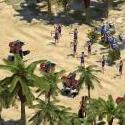
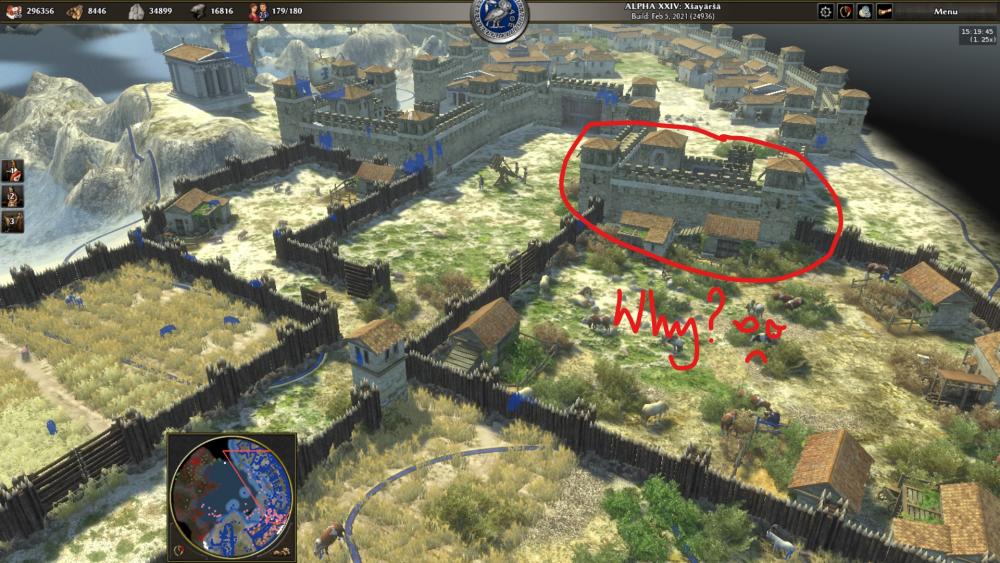
(1).thumb.gif.b5909d3df98a8ec15dc452423f219bc5.gif)

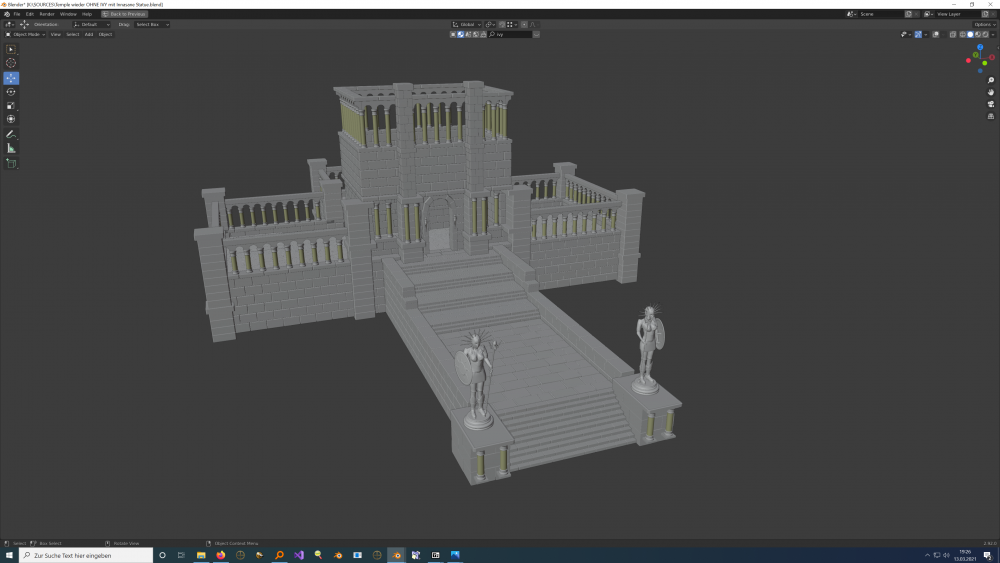

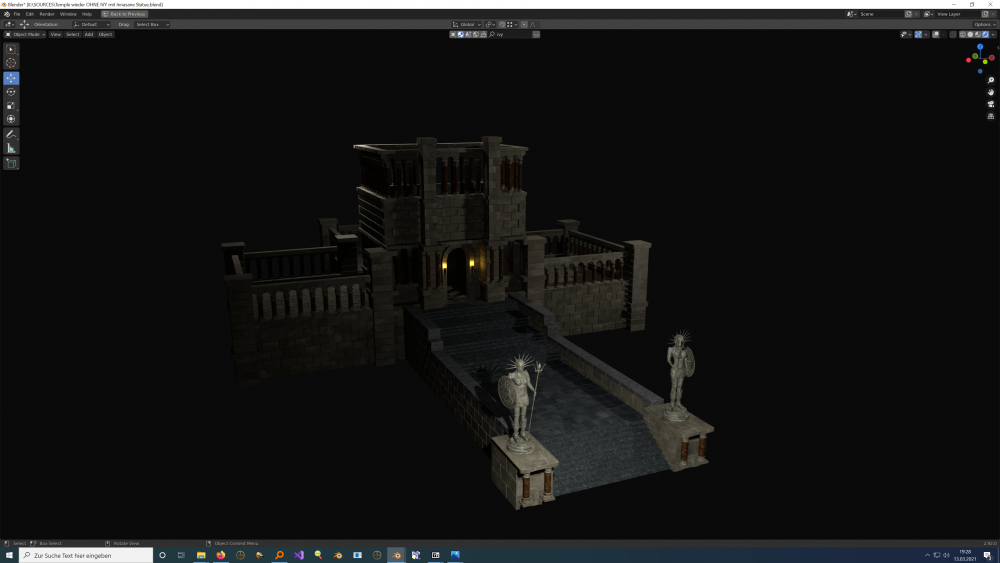
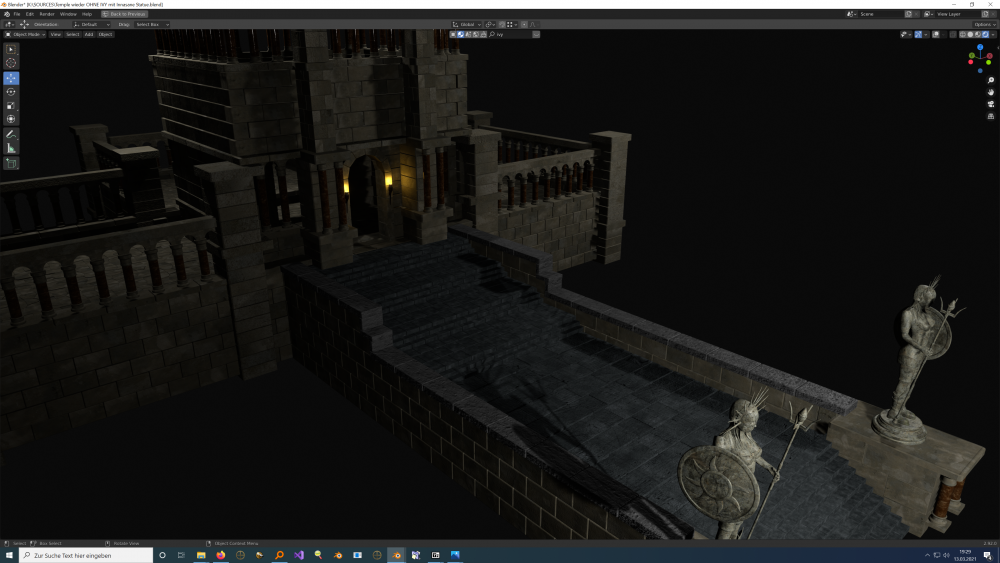
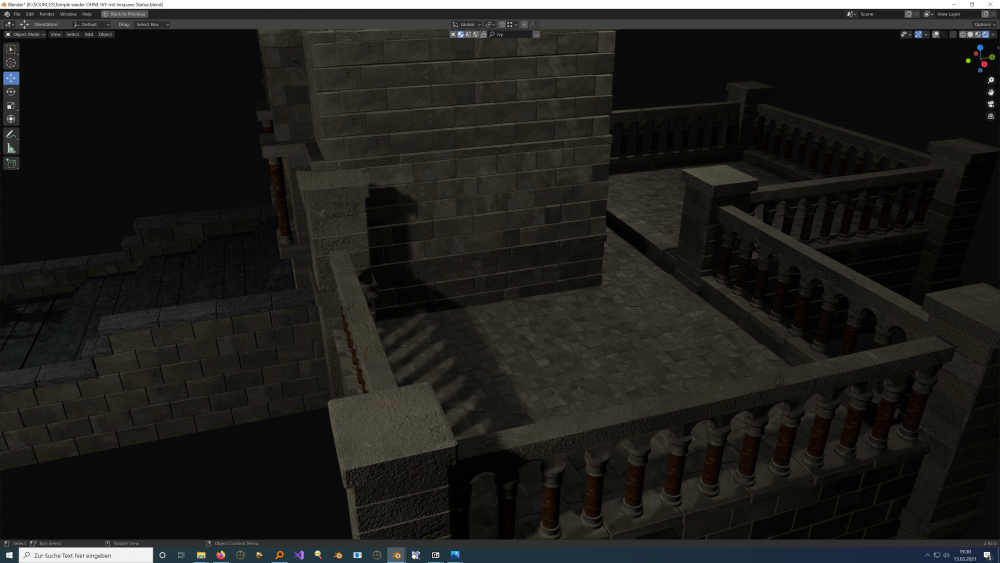
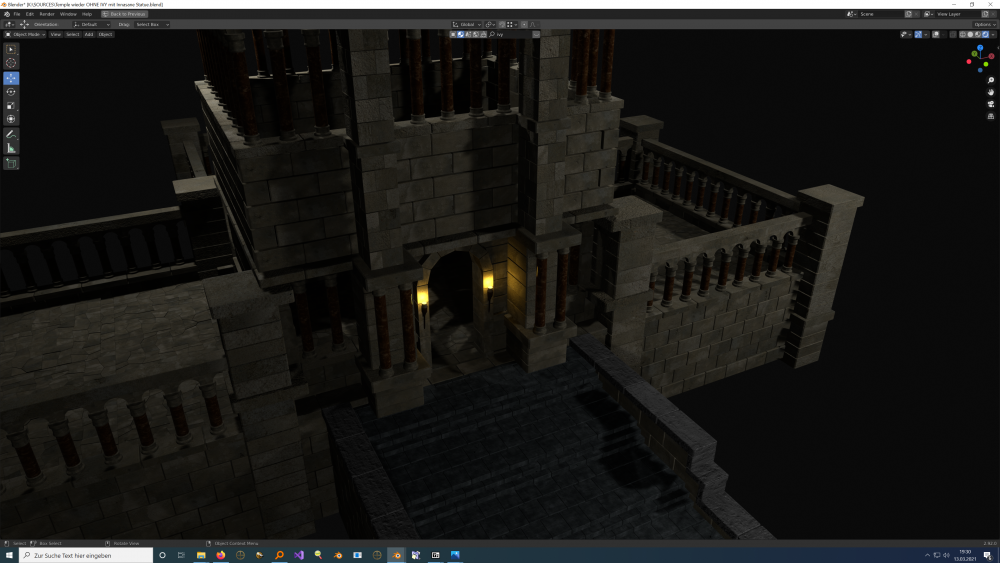


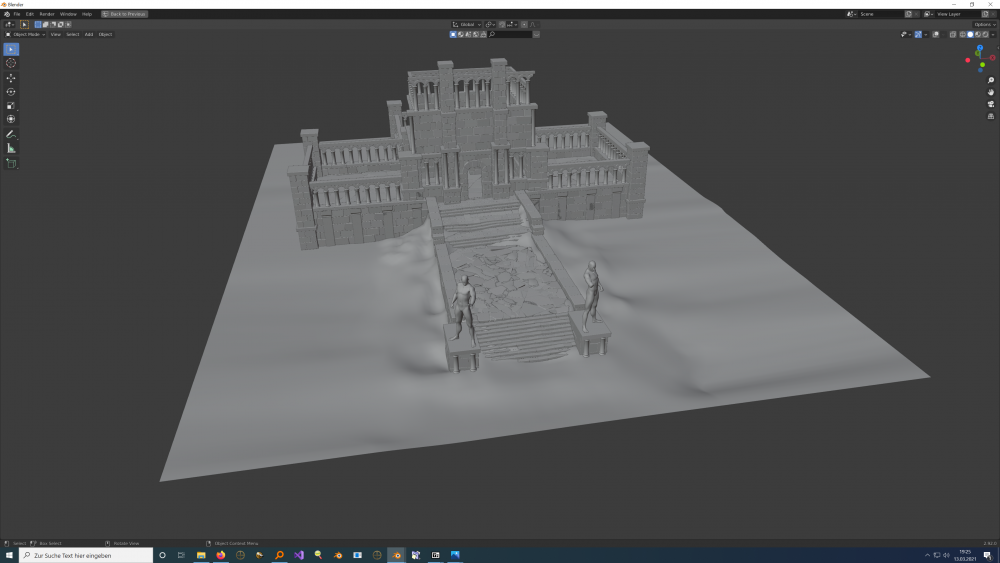






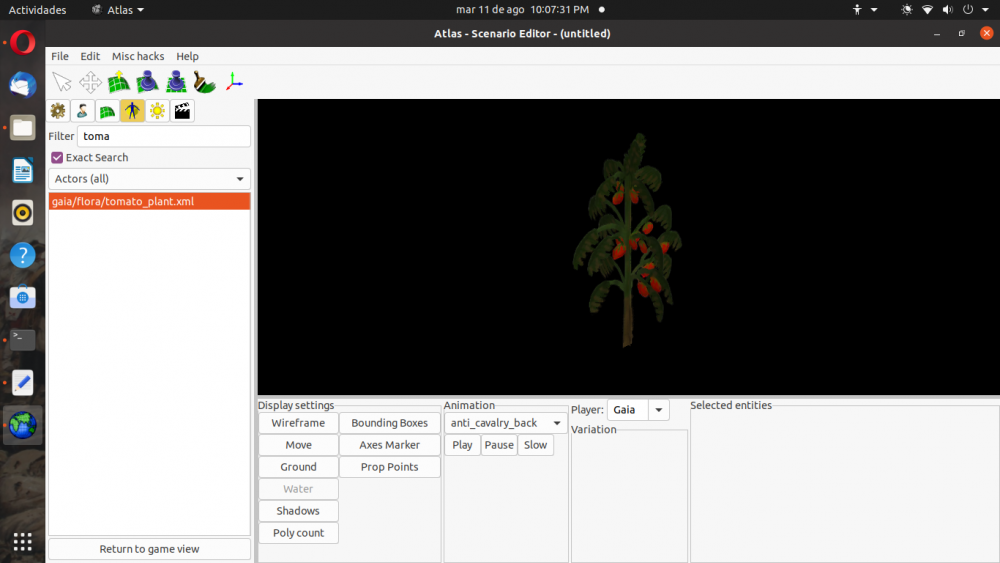
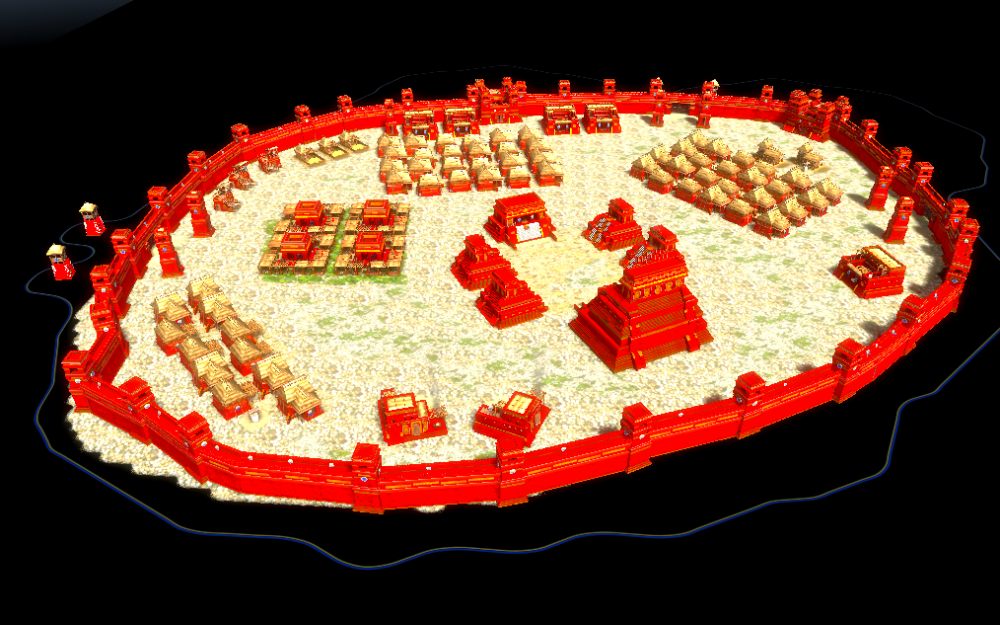
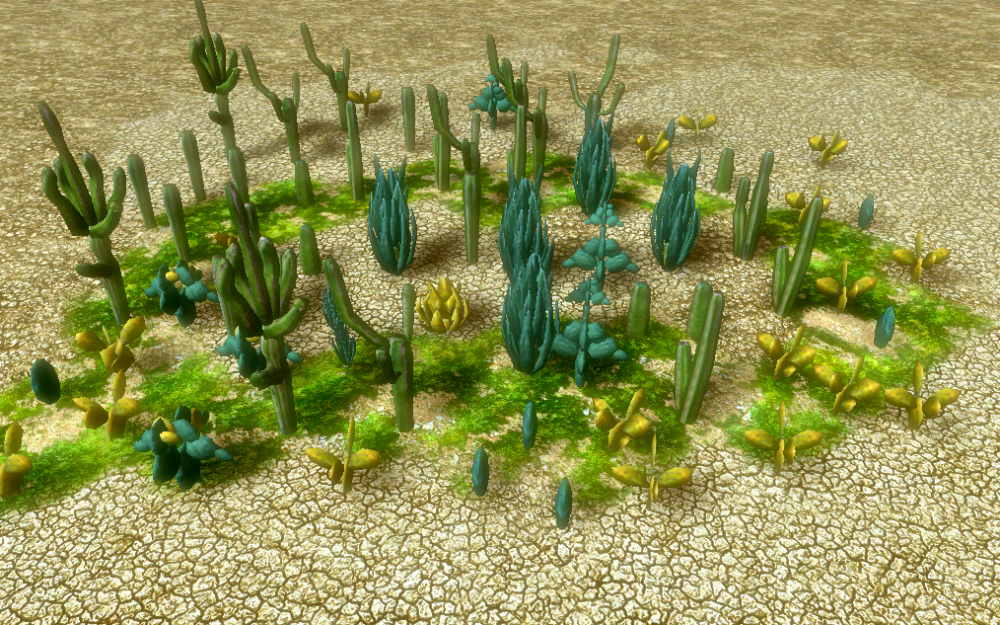


.thumb.jpg.b85f1db9873287a0d10cd2c7e88579c0.jpg)

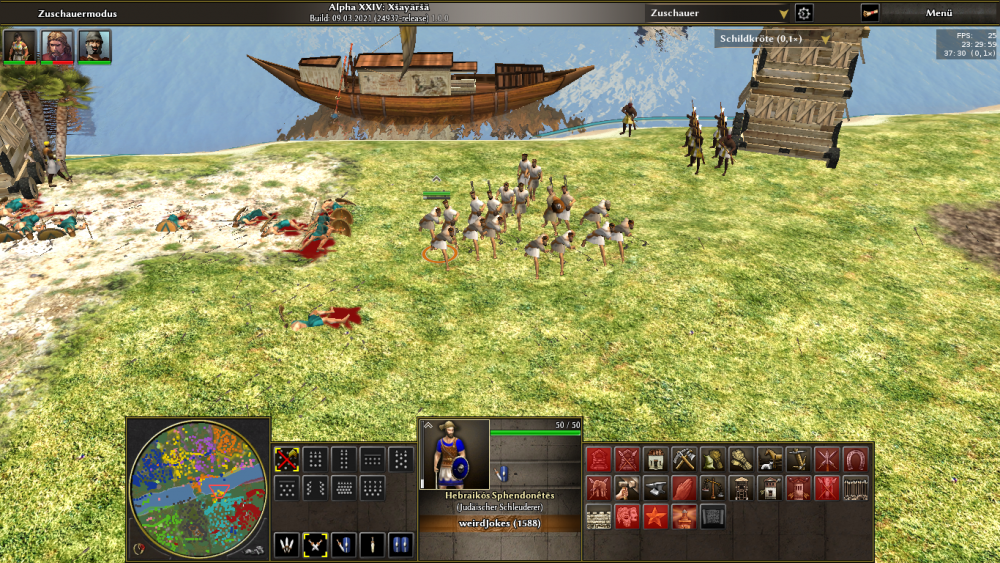
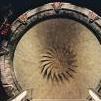

.thumb.png.f3f47d08fd1bf1063ea4b371390681b4.png)
.thumb.jpg.b21ca1d0c15fb56b42c39b25a0a40815.jpg)

